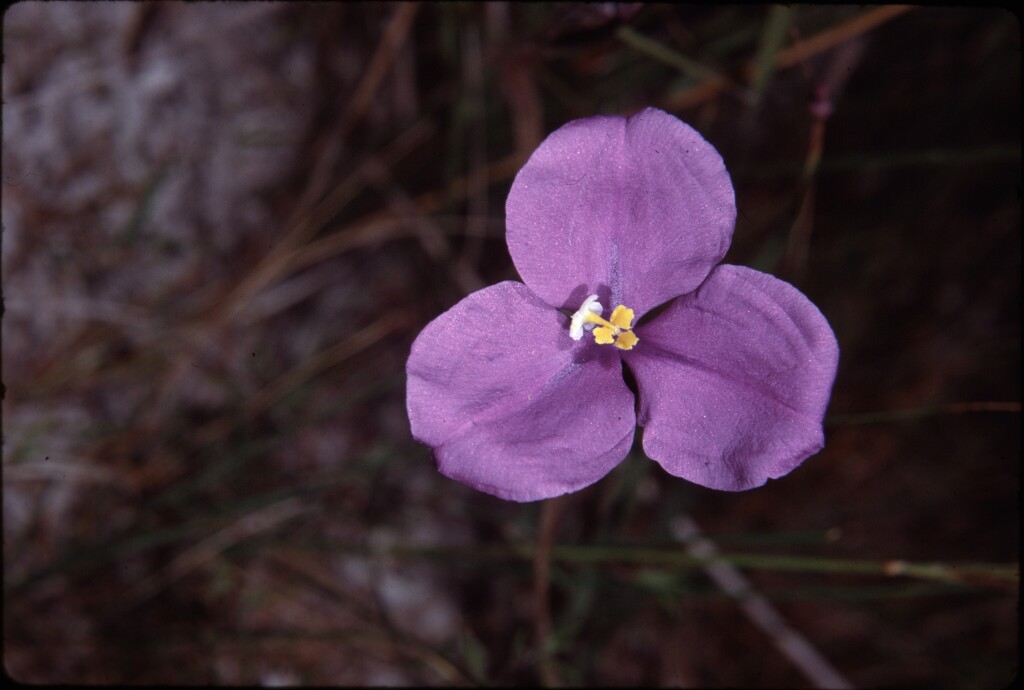Patersonia
Tufted, rhizomatous, perennial herb or rarely undershrub. Leaves basal, equitant, usually linear or ensiform. Inflorescence erect, scape terete, unbranched, leafless, but often clasped at base by leaf; flowering part of inflorescence made up of 2 flower-clusters, enclosed by 2 opposite primary bracts and separated by shorter secondary bracts, each cluster 1–6-flowered. Flowers actinomorphic, sessile, soon withering, blue-violet, each with a papery tertiary bract; perianth whorls forming a 'tube' which is ± included in bracts; outer perianth lobes free, broad, spreading, inner perianth lobes free, very small, erect; stamens inserted distally on 'tube', filaments exserted, partly or completely united, anthers basifixed, yellow; style filiform, unbranched, exceeding anthers, stigma 3-lobed, equal, flattened, each lobe free and obovate to cuneate or almost fully united. Capsule sessile, ± enclosed by bracts; seeds numerous, often with aril.
About 19 species, 17 endemic in Australia and 1 or 2 species in Malesia; 4 species in Victoria.
Several Australian species are occasionally cultivated as ornamentals.
Conn, B.J. (1994). Iridaceae. In: Walsh, N.G.; Entwisle, T.J., Flora of Victoria Vol. 2, Ferns and Allied Plants, Conifers and Monocotyledons, pp. 686–716. Inkata Press, Melbourne.
 Spinning
Spinning


